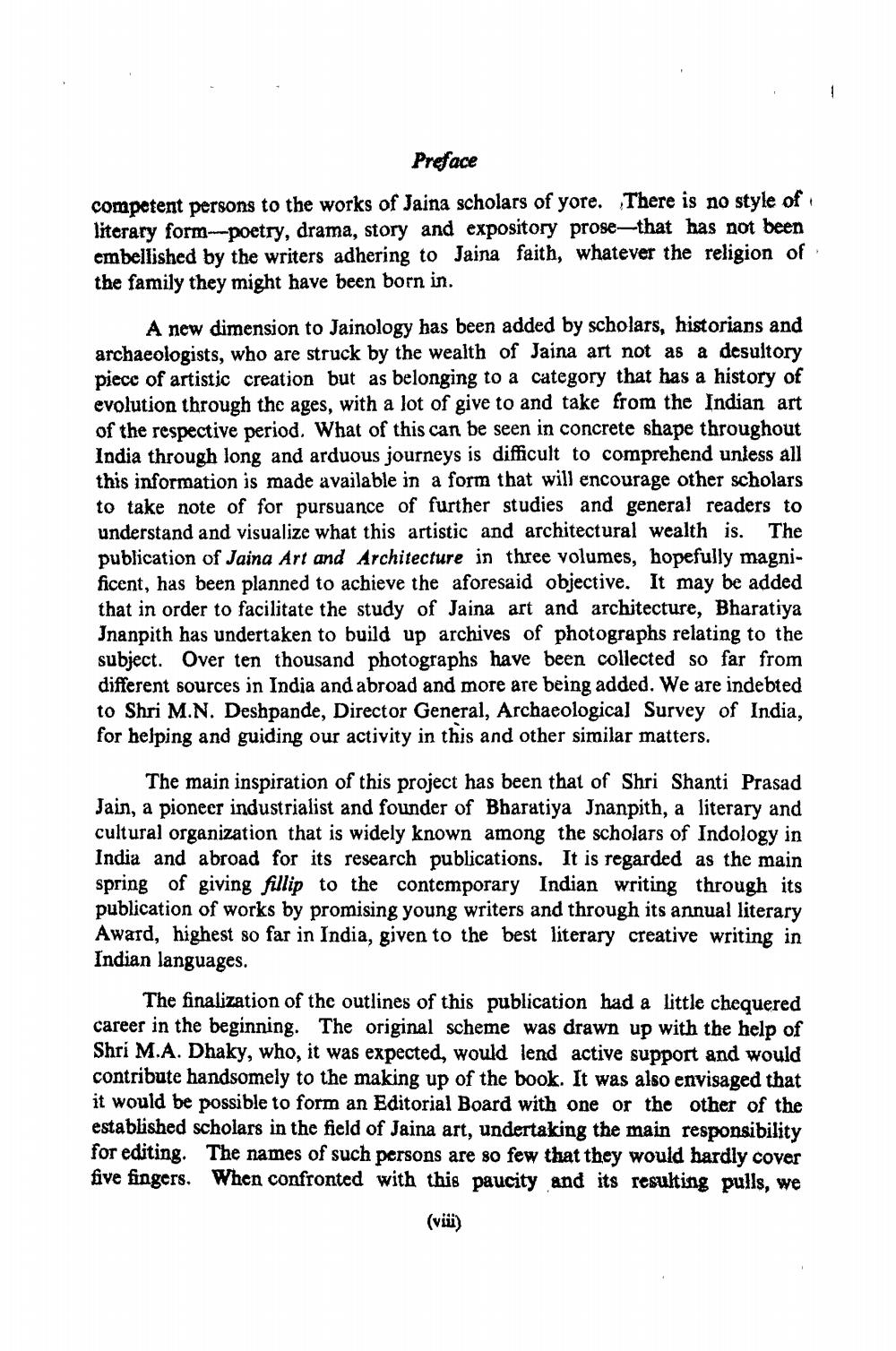Book Title: Jaina Art and Architecture Vol 01 Author(s): A Ghosh Publisher: Bharatiya Gyanpith View full book textPage 8
________________ Preface competent persons to the works of Jaina scholars of yore. There is no style of literary form-poetry, drama, story and expository prose-that has not been embellished by the writers adhering to Jaina faith, whatever the religion of the family they might have been born in. A new dimension to Jainology has been added by scholars, historians and archaeologists, who are struck by the wealth of Jaina art not as a desultory piece of artistic creation but as belonging to a category that has a history of evolution through the ages, with a lot of give to and take from the Indian art of the respective period. What of this can be seen in concrete shape throughout India through long and arduous journeys is difficult to comprehend unless all this information is made available in a form that will encourage other scholars to take note of for pursuance of further studies and general readers to understand and visualize what this artistic and architectural wealth is. The publication of Jaina Art and Architecture in three volumes, hopefully magnificent, has been planned to achieve the aforesaid objective. It may be added that in order to facilitate the study of Jaina art and architecture, Bharatiya Jnanpith has undertaken to build up archives of photographs relating to the subject. Over ten thousand photographs have been collected so far from different sources in India and abroad and more are being added. We are indebted to Shri M.N. Deshpande, Director General, Archaeological Survey of India, for helping and guiding our activity in this and other similar matters. The main inspiration of this project has been that of Shri Shanti Prasad Jain, a pioneer industrialist and founder of Bharatiya Jnanpith, a literary and cultural organization that is widely known among the scholars of Indology in India and abroad for its research publications. It is regarded as the main spring of giving fillip to the contemporary Indian writing through its publication of works by promising young writers and through its annual literary Award, highest so far in India, given to the best literary creative writing in Indian languages. The finalization of the outlines of this publication had a little chequered career in the beginning. The original scheme was drawn up with the help of Shri M.A. Dhaky, who, it was expected, would lend active support and would contribute handsomely to the making up of the book. It was also envisaged that it would be possible to form an Editorial Board with one or the other of the established scholars in the field of Jaina art, undertaking the main responsibility for editing. The names of such persons are so few that they would hardly cover five fingers. When confronted with this paucity and its resulting pulls, we (viii)Page Navigation
1 ... 6 7 8 9 10 11 12 13 14 15 16 17 18 19 20 21 22 23 24 25 26 27 28 29 30 31 32 33 34 35 36 37 38 39 40 41 42 43 44 45 46 47 48 49 50 51 52 53 54 55 56 57 58 59 60 61 62 63 64 65 66 67 68 69 70 71 72 73 74 75 76 77 78 79 80 81 82 ... 345
